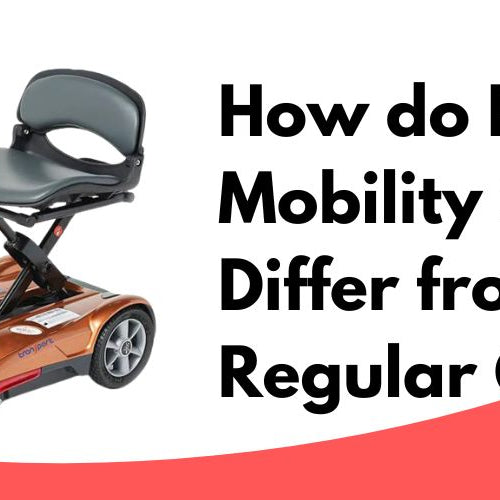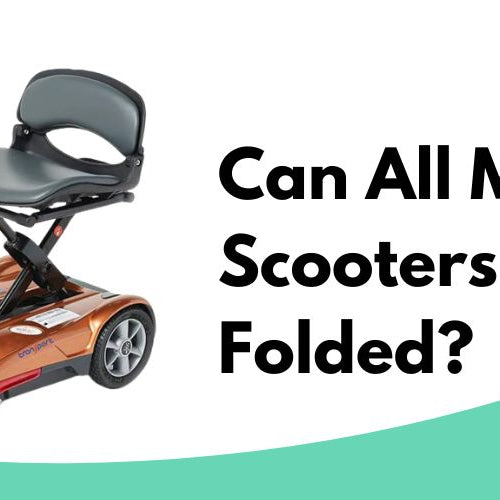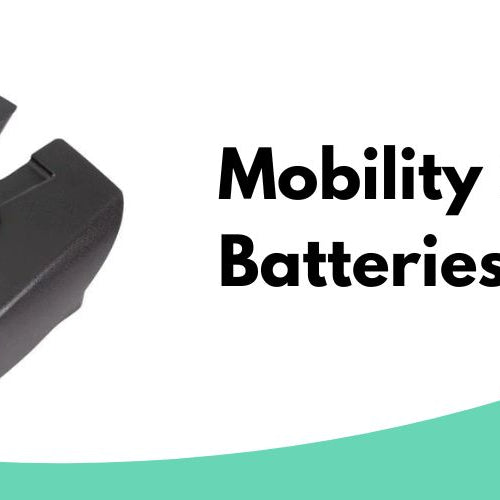Mobility scooters have become an increasingly popular choice for individuals with limited mobility, enabling them to maintain their independence and navigate their daily lives with ease. Understanding the weight of a mobility scooter is essential for users who need to transport their device frequently, as it can impact portability and ease of use. In this article, we will delve into the factors that influence the weight of mobility scooters and provide useful information to help you make an informed decision when choosing the right scooter for your needs.
The weight of a mobility scooter can vary greatly depending on factors such as the model, materials used, and the number of wheels. Typically, they can weigh anywhere from 85 to over 300 pounds. Smaller, travel-sized models like the Go-Go Elite Traveller series by Pride Mobility have been designed to be easily disassembled and transported, with the heaviest piece being the front wheel assembly. These scooters come in both 3-wheel and 4-wheel options, with the 4-wheel version being slightly heavier due to the additional wheel and added stability it provides.
Aside from the overall weight, it is essential to consider how each mobility scooter can be disassembled or folded for transportation. Some models are designed to break down into smaller, more manageable components, while others may fold or collapse as a single piece. Understanding the disassembly process and the weight of each component can help users to determine how feasible it is to transport and store their mobility scooter when not in use.
Understanding Mobility Scooters
Mobility scooters are essential tools for individuals with mobility issues or limited physical ability. They aid in providing independence and freedom to move around in daily life. To better understand mobility scooters, we will discuss their types and the drive systems used in these devices.
Types of Mobility Scooters
There are several types of mobility scooters, each designed for specific needs and requirements. They can be broadly categorized into three main types:
-
Indoor mobility scooters: These are designed for indoor use and have a smaller turning radius, making them easy to maneuver in tight spaces. Lightweight and compact, these scooters typically have a lower weight capacity, and their top speed is significantly lower than outdoor models.
-
Outdoor mobility scooters: Built for outdoor use, these scooters have a larger wheelbase, more robust tires, and a higher ground clearance to handle various terrains. They are usually equipped with front and rear suspension systems for a smoother ride and have greater weight capacities as well.
-
Travel/Folding mobility scooters: These scooters are designed to be portable and easy to transport. They can be disassembled into smaller, lighter components, which makes them convenient for those who frequently travel. The weight of these disassembled pieces typically ranges from 30-80 pounds.
The weight of mobility scooters varies widely, with assembled weights ranging from 50 lbs to over 250 lbs. Factors affecting the scooter's weight include its type, size, battery, and material used in construction.
Drive System
The drive system of a mobility scooter plays a crucial role in determining its performance, efficiency, and maintenance requirements. There are two primary drive systems used in mobility scooters:
-
Direct drive system: Direct drive systems feature a motor that directly powers the scooter's wheels. With fewer moving parts, this system requires less maintenance and can result in increased power efficiency. However, direct drive systems may have less torque than chain or belt systems, making them less suitable for handling rough terrains or inclines.
-
Chain or belt drive system: These systems use a chain or belt to transfer power from the motor to the scooter's wheels. They provide more torque, which is useful for negotiating rough terrain or inclines. However, they require more maintenance than direct drive systems due to the potential for chain or belt wear and tension adjustments.
To select the right mobility scooter for your needs, consider factors such as desired use, weight capacity required, portability, and the scooter's own weight. Understanding these features and how they interact with different drive systems can help ensure you choose the best mobility scooter for your unique needs.
If you have any questions, contact us at Mobility Nest and we would love to assist you.
Factors Affecting Mobility Scooter Weight
When discussing mobility scooters, weight plays an essential role in various aspects like transportation, handling, and the user's overall experience. This section will explore the factors affecting a mobility scooter's weight, including battery size and type, frame material, and additional features.
Battery Size and Type
Mobility scooters rely on batteries to provide power for movement. The weight of the scooter will be affected by the battery size and type used. Generally, there are two types of batteries commonly used in mobility scooters: sealed lead-acid (SLA) batteries and lithium-ion batteries.
-
Sealed Lead-Acid (SLA) Batteries: These batteries are heavier, contributing more to the scooter's overall weight, but are typically less expensive and easy to maintain. They typically weigh between 15-30 pounds each and have a useful life of around 2-3 years.
-
Lithium-Ion Batteries: They are lighter and more expensive than SLA batteries but offer a higher energy density, which translates to longer run times and shorter charging periods. Lithium-ion batteries weigh 5-15 pounds, depending on their capacity, and tend to last about 5-7 years.
Frame Material
The frame material of a mobility scooter determines its durability and overall weight. There are two common materials used in the construction of mobility scooter frames: steel and aluminum.
-
Steel Frames: Steel is a strong and durable material but tends to be heavier than aluminum. Mobility scooters made with steel frames can weigh between 80 and 200 pounds depending on the model and size. The added weight provides more stability but can make transportation more challenging.
-
Aluminum Frames: Aluminum is a lighter material compared to steel, as it weighs approximately one-third less. A lighter frame means easier transportation and maneuverability, but it might compromise the scooter's sturdiness and resistance to wear and tear. Scooters with aluminum frames typically weigh between 50 and 150 pounds, based on their design and structure.
Additional Features
The addition of extra features to a mobility scooter can have a significant impact on its overall weight. Some of these features may include the following:
-
Customization Options: Mobility scooters can often be customized with various options such as swivel seats, adjustable armrests, and onboard storage compartments. These customizations can increase the scooter's weight by 5-15 pounds, depending on the specific options chosen.
-
Suspension and Tires: Some mobility scooters come equipped with advanced suspension systems and larger or thicker tires for a smoother, more comfortable ride. These enhancements will add some extra weight, usually between 10 and 20 pounds.
-
Increased Weight Capacity: Heavy-duty mobility scooters designed to accommodate users with a weight capacity of up to 500 pounds will have reinforced frames and more robust components, leading to an increase in the scooter's overall weight.
In summary, various factors like battery size and type, frame material, and additional features determine a mobility scooter's weight. This knowledge helps users make an informed choice based on their needs and physical capabilities.
Weight Range of Mobility Scooters
Lightweight Mobility Scooters
Lightweight mobility scooters generally weigh less than standard models and are designed for easy transport and storage. These scooters often feature foldable designs allowing for hassle-free carrying and portability. The weight of lightweight mobility scooters typically ranges from 30-80 pounds, making them a convenient option for users who need a highly mobile and easily storable solution.
Standard Mobility Scooters
Standard mobility scooters offer a balance between weight, functionality, and durability. They can typically support riders weighing anywhere from 250 to 350 pounds comfortably. The average weight of standard scooters falls within the range of 50-200 pounds. While heavier than lightweight models, standard mobility scooters still offer good portability, especially those designed with disassembling features. Their disassembled heaviest pieces can weigh between 32 and 57 pounds, depending on the specific model.
Heavy-Duty Mobility Scooters
Heavy-duty mobility scooters are designed for users with more substantial body weights and those requiring a higher weight capacity. These scooters can often support weights of up to 500 pounds or more. One example of such a scooter is the EW-72, a stylish and fast 4-Wheel offering from E-Wheels that can carry up to 500 pounds and travels at a top speed of 15 MPH.
Despite their increased weight capacity, these heavy-duty models do come with a trade-off in terms of overall weight. The weight range of heavy-duty scooters typically falls between 80 and 180 pounds, making them less portable compared to their lightweight and standard counterparts. However, some models still offer mobility features such as disassembly or foldable designs to aid in transportability, ensuring that users with more significant weight requirements can still have access to a suitable and mobile solution.
To summarize, mobility scooters can be broadly categorized into three weight range groups: lightweight, standard, and heavy-duty. Each category has its unique features and benefits, catering to the specific needs of users in terms of weight capacity, portability, and functionality.
Importance of Weight for Mobility Scooters
Transportation and Travel
The weight of a mobility scooter plays a significant role in its transportation and travel ease. Heavier scooters might be more challenging to transport, especially for those who need to disassemble and reassemble their scooters frequently. Lighter scooters, on the other hand, provide better portability. Disassembling or travel scooters weigh between 80-180 lbs, with their heaviest pieces ranging from 30-80 lbs. The lighter the scooter, the easier it is to manage during transport, making it a crucial factor when choosing a mobility scooter for travel purposes.
Indoor and Outdoor Use
The weight of a mobility scooter also affects its performance for both indoor and outdoor use. Lighter scooters tend to be more maneuverable, which is essential for navigating tight spaces indoors. On the other hand, heavier scooters might be more appropriate for outdoor use, as they typically have a higher weight capacity and can better handle various terrains. A scooter's weight capacity generally ranges from 250 to 500 pounds, which factors into its suitability for different users and environments.
Storage Solutions
Considering storage solutions is essential when deciding on a mobility scooter, as its weight can impact the ease or difficulty of storage. Lightweight scooters are often easier to store due to their smaller size and ability to fit into tight spaces. Heavier scooters might require more robust storage solutions to accommodate their size and weight properly. Foldable scooters, for example, have a more compact design for storage compared to disassembling scooters that need to be broken down into pieces.
Frequently Asked Questions
Average weight range of scooters
Mobility scooters come in various sizes and designs, with their weights varying accordingly. On average, the weight of mobility scooters ranges from about 90 pounds for a small, travel-friendly scooter to more than 300 pounds for a heavy-duty scooter. Keep in mind that these weights may not include the weight of the battery or any additional accessories, so it's important to factor those in when evaluating a scooter's weight.
Weight limits for users
The maximum weight capacity for mobility scooters depends on the specific model. Lightweight, standard-sized scooters typically support riders up to 250 to 350 pounds. However, there are heavy-duty mobility scooters available, like the EW-72 from E-Wheels, that can accommodate users up to 500 pounds.
Pride scooter weights
Pride Mobility is a popular manufacturer of quality mobility scooters. Their scooters vary in weight depending on the model. For example, their compact, transportable models, such as the Go-Go Elite Traveller, weigh around 80 to 95 pounds, while their higher-end, full-size models, like the Pursuit XL, can weigh up to 400 pounds.
Scooter weight in kg
To convert the weight of a mobility scooter from pounds to kilograms, you can use the following conversion factor: 1 pound is approximately equal to 0.453592 kilograms. As an example, a scooter weighing 100 pounds would weigh about 45.36 kilograms.
Transporting tips
When transporting your mobility scooter, consider its weight and your ability to lift and carry it. Compact, folding scooters are easier to transport, as they tend to weigh between 30 and 40 pounds. If you need a scooter that disassembles for transportation, ensure that you can lift each component. Additionally, many people use vehicle lifts, ramps, or carriers to help with transporting their scooters.
Comparing to electric wheelchairs
Electric wheelchairs and mobility scooters serve similar purposes, but they differ in design and weight. Electric wheelchairs often weigh more than mobility scooters due to their solid construction and additional features, such as motorized tilt and reclining. Manual wheelchairs, on the other hand, can weigh between 15 to 60 pounds. When deciding between a mobility scooter and an electric wheelchair, consider factors such as weight, intended use, and your personal mobility requirements.






Leave a comment